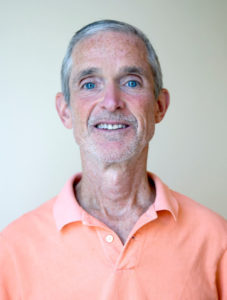 The saints and sages of many faiths are dynamic examples of how spiritual awakening is accompanied by a natural impulse to serve humanity. After experiencing the interconnection of all of life, many of these great beings were moved by a profound compassion to dedicate their lives to the relief of suffering. All of the many faith traditions also recognize the importance of seva, or selfless service, as one of the primary means by which we grow on the spiritual path and experience that full awakening.
The saints and sages of many faiths are dynamic examples of how spiritual awakening is accompanied by a natural impulse to serve humanity. After experiencing the interconnection of all of life, many of these great beings were moved by a profound compassion to dedicate their lives to the relief of suffering. All of the many faith traditions also recognize the importance of seva, or selfless service, as one of the primary means by which we grow on the spiritual path and experience that full awakening.
But the messages of our culture instill in us the illusion that we are all separate beings, each needing to pursue happiness as individuals. This easily leads to comparing ourselves and competing with each other for the things and achievements that seem to create a happy life. And the world economy feeds on this illusion by offering us happiness in the form of the marketplace—an endless variety of things to buy. Thus, many people find themselves living in a relentless cycle of earning and consuming that, sooner or later, leaves them feeling frustrated and incomplete, cut off from everything that really gives life meaning.
The teachings of Yoga offer a completely different paradigm. Serving others is seen as a unique spiritual path—Karma Yoga—a practice in which actions are performed with a focused mind, a caring heart, and no concern for personal gain. This intention can be incorporated into literally anything we do and it deepens as we become less dependent on the outcome of our efforts and experience a newfound freedom from tension and expectations.
What a relief it is for me to focus fully on my work projects, free of worry, knowing that agonizing over the results only diminishes my skills. Then it can be more like play. Sri Swami Satchidananda put it this way: “Do your best, leave the rest.”
Perhaps the most powerful way this practice develops is from the joy we derive from giving ourselves wholeheartedly in service to someone or some higher purpose. Many people who work in service of others find tremendous fulfillment in the act of serving, giving, or even praying for others. Such experiences go beyond theory—they enable us to feel a deep sense of connection and belonging, a purpose for living that is larger than ourselves, and the flow of love that is a natural expression of our true nature.
An equally powerful approach to seva is devotion, service as an offering to God. Since we don’t easily recognize the Divine in each other—and the idea of a spiritual consciousness is so abstract—people throughout history have found countless symbols, names, and forms to represent this ineffable Presence that dwells within everything. This form, be it a deity, spiritual principle like peace, or a picture of a saint, can help us cultivate a higher form of love. Love directed toward God in any form inspires us to feel protection and comfort, to access an ever-present Grace and inner strength, and rise above the illusion of separation.
Yoga offers techniques to cultivate this deep love, which are collectively known as Bhakti Yoga. These practices include chanting the names of the Divine to feel its Presence (kirtan), creating an altar and making heartfelt offerings (puja), and performing actions with reverence and devotion (seva).
When we perform duties as an offering to a beloved personification of the Divine, we give our very best. In the Bhagavad Gita, Sri Krishna says, “Perfection in action is Yoga.” When we strive to see ourselves as instruments of the Divine—the hands of God at work in the world—we access and allow ourselves to be guided by an inner strength, much greater than our own. We let go of our personal desires without force or denial by willingly surrendering to a Higher Will.
The intention to serve a Higher Will inevitably leads us to serving our families, neighbors, and communities. As Mother Theresa beautifully experienced and taught, we serve God by serving the Divinity in each other, in all of nature. Seva is a practice, and if we practice seeing and serving God in all, we gradually erase the imaginary boundaries we have come to believe in.
We have a new administration in the United States and people all over the world are gradually receiving the COVID vaccine. But that doesn’t mean we can sit back and let our governments take care of everything. We all need to step up and contribute to our communities in whatever way we can. Serving in such ways arises naturally from the recognition of our interdependence with all of life. Actions performed with genuine care for others are healing for our hearts, and we find joy in giving rather than looking for a reward or outcome. This is how we really bring our Yoga practice to life.
About the Author:
 Swami Ramananda is the president of the Integral Yoga Institute of San Francisco and a greatly respected master teacher in the Integral Yoga tradition, who has been practicing Yoga for more than 35 years. He offers practical methods for integrating the timeless teachings and practices of Yoga into daily life. He leads beginner, intermediate, and advanced-level Yoga Teacher Training programs in San Francisco and a variety of programs in many locations in the United States, Europe, and South America. Swami Ramananda trains Yoga teachers to carry Yoga into corporate, hospital, and medical settings and has taught mind/body wellness programs in many places. He is a founding board member of the Yoga Alliance, a national registry that supports and promotes Yoga teachers as professionals.
Swami Ramananda is the president of the Integral Yoga Institute of San Francisco and a greatly respected master teacher in the Integral Yoga tradition, who has been practicing Yoga for more than 35 years. He offers practical methods for integrating the timeless teachings and practices of Yoga into daily life. He leads beginner, intermediate, and advanced-level Yoga Teacher Training programs in San Francisco and a variety of programs in many locations in the United States, Europe, and South America. Swami Ramananda trains Yoga teachers to carry Yoga into corporate, hospital, and medical settings and has taught mind/body wellness programs in many places. He is a founding board member of the Yoga Alliance, a national registry that supports and promotes Yoga teachers as professionals.

